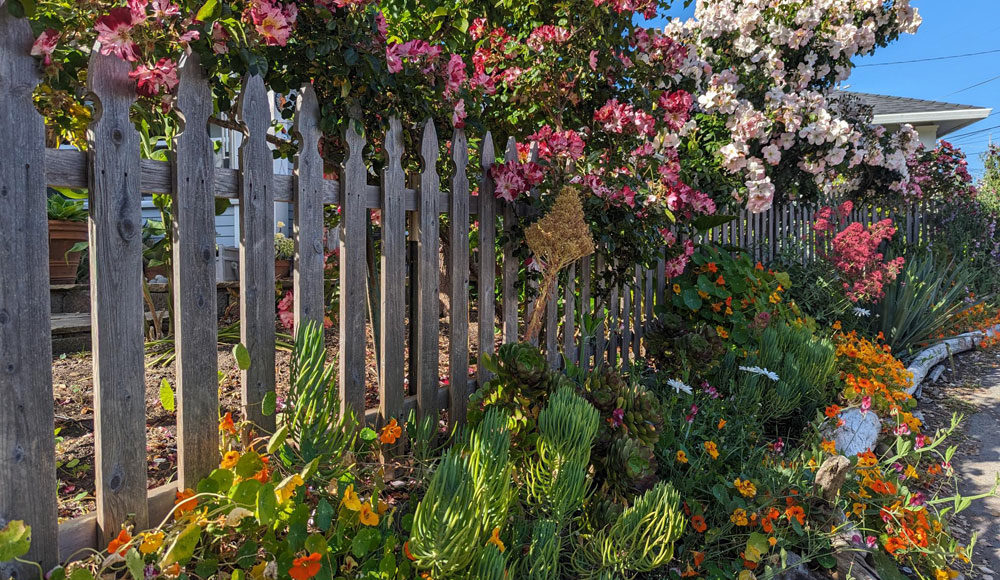There’s a lot going on in the world today, and mainstream media isn’t exactly the harbinger of good news. In the ever-changing face of modern society, building mental resilience is more important than ever. Lucky for us we also live in a place of great beauty and creativity, and now new research uncovers how nature, music and art have the power to shift mental states and lead us out of the quagmire.
Think back to a time before deadlines rolled in relentlessly and smartphones kept us tied to an arm’s-length to-do list. Is it possible to remember having space and time to explore the world? To make art just for fun, to forest bathe (aka spend time in nature)? To literally stop and smell the roses?
In our busy world, it takes a week away from work (or family!) to slow down long enough to take in the scenery. But does it have to? What if stress relief was as easy as a stroll through the MAH, or a sipping chamomile tea at the Flower Bar on Cedar Street?
According to a new field of research called neuroaesthenics, the call to the arts and creativity is hard-wired, encoded in our DNA as an essential part of our humanity. It’s not a case of self-indulgence: Making time for these everyday experiences is important for keeping burnout at bay.
Neuroaesthetics, a term coined by neuroscientist Semir Zeki in the late 1990s, explores the intersection of brain science and the arts. Initially, the field focused on how we perceive and judge art. Today’s neuroaesthetics explores the direct impact of visual arts, including those perennial roses, architecture, design, digital media and music on the human brain and behavior.
Evolutionary biologists point out that the arts help us connect and communicate, a primal function that has stood the test of time. From the sacred chants of Gregorian monks to the colorful halls of the Tannery, art has been a healing tool throughout history.
Your Brain on Art
Experiencing art is a complex mental tango. We perceive the world through data from our senses, leaving our brains to translate it into an image unique to each of us. It’s why one person appreciates an abstract painting while another is convinced their five-year-old could do it better.
But when you love it, it’s all good! Scientists studying neuroaesthetics are discovering how the brain’s reward system is prone to light up in the face of an exquisitely painted landscape, just like when we lose ourselves in a garage band jam. These systems release dopamine, serotonin and oxytocin, chemicals that make us feel good and trigger positive emotions.
Using new technologies like wearable sensors, scientists can measure real-time changes in respiration, temperature, heart rate and skin responses during art experiences.
Poster Child for Neuroaesthetics
Artists have always understood the deep connection between their work and well-being, and our vibrant community is a prime example.
The Santa Cruz Art League (scal.org) was founded in 1919 by a group of local artists looking for a place to meet in order to share their art, to teach and to motivate one another. Over the last 100 years the Santa Cruz Art League has been consistently committed and supportive of local artists by encouraging visual and performing arts in an environment that is supportive not only to the artist, but also to students, and to the community.
Since 2001, a spiritual dance jam has occurred every Sunday morning in Santa Cruz. Dance Church (dolphindancing.com) creates sacred and safe containers to encourage physical and emotional healing, liberate individual expression and nourish community through dance.
Watsonville artist Judy Gittelsohn (studiojudyg.com) has spent more than 20 years teaching art to people with special needs in individual and group settings.
Beyond the four walls, one might take a Richard Stockton hike, a First Friday art walk or stop to appreciate the colorful array of flora lining the tiny streets of Capitola Village, one of my personal favorites.
Stopping long enough to appreciate beauty, to stay in the moment, sends a signal to the brain that everything is okay. Call it neuroaesthetics, mindfulness or art appreciation—losing oneself in the beauty of the moment is a powerful way to uplift spirits and shift perspective.
If neuroaesthetics sounds intriguing, try this before-and-after test:
Gauge your mood for the next several days with a 1-10 ranking charted on a sticky note placed somewhere obvious, like on the bathroom mirror.
After Day 3, schedule at least five minutes each morning for the next seven days for a neuroaesthetic fix. Longer is great, but don’t make it a dealbreaker. It doesn’t have to be the same thing each day, but doing it at the same time makes it easier to stay on track.
On Day 7, start a new sticky note for the next three days. What do you notice?
Feel free to share what you did and how it went: el*******@el**************.com ” target=”_blank” rel=”noreferrer noopener”> el*******@el**************.com .












